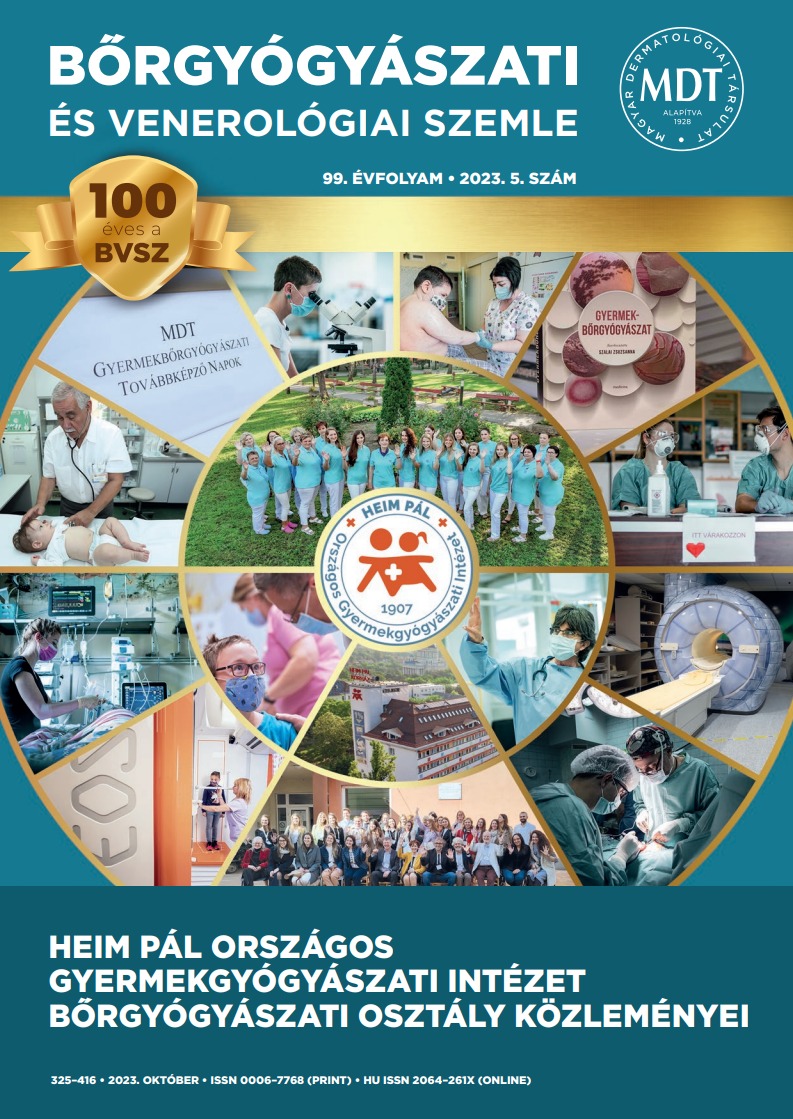Kamaszkori sinus pilonidalis: a localis kezeléstől a lebenyelforgatásig
Absztrakt
A pilonidalis betegség (PD) kezelése kihívásokkal teli: recidívára hajlamos, sok a nemkívánatos esemény. Rizikófaktorai a férfi nem, túlsúly, rigid, dús szőrzet, inaktivitás, rossz higiéniás viszonyok. Kórismézése alapvetően fizikális vizsgálattal elvégezhető. Akut formája a helyi gyulladás – cellulitis, abscessus, míg krónikus megjelenése a „sacralis pit”, sipoly(ok). Akut tályog esetén konzervatív terápia (localis kezelés mellett antibiotikum adagolása), valamilyen „off-midline” incisio alkalmazása javasolt. A krónikus formák esetében elsődleges a rizikótényezők csökkentése: fogyás, fizikai aktivitás növelése, higiénia fokozása, tartós szőrtelenítés. Amennyiben műtétre kerülne sor, a lehető legkevésbé invazív megoldást válasszuk (trephinatio, PEPSiT) és úgy haladjunk az egyre invazívabb, bonyolultabb megoldások felé (pl. lebenyplasztika). Maga a műtét önmagában nem elégséges, fontos, hogy az utógondozás során a higiénia és a szőrtelenítés végig adekvát legyen.




